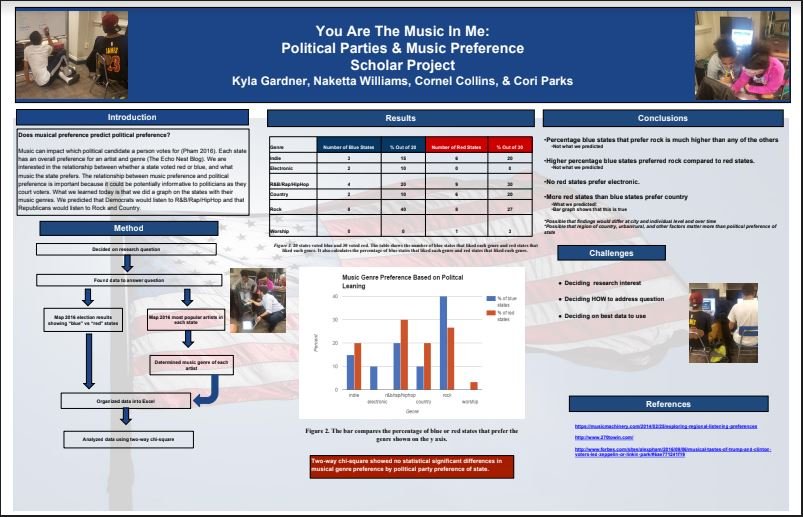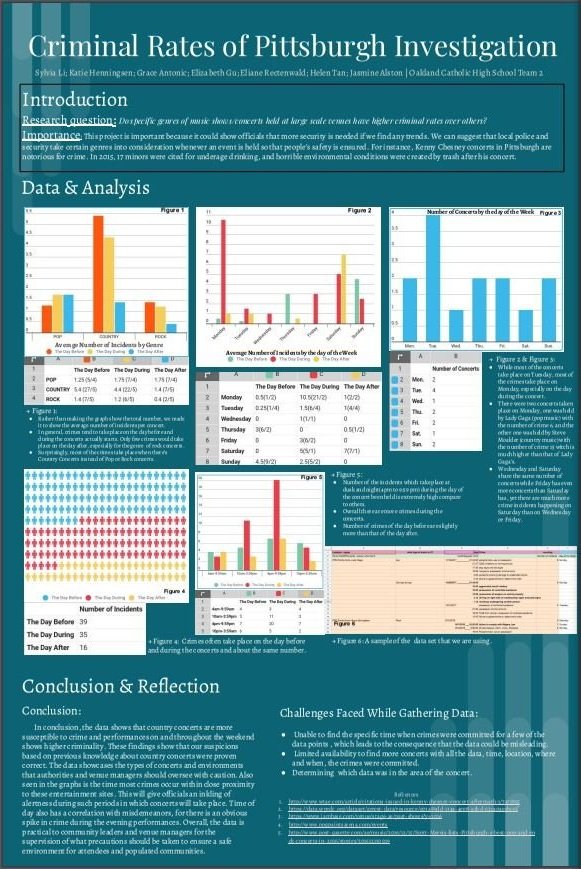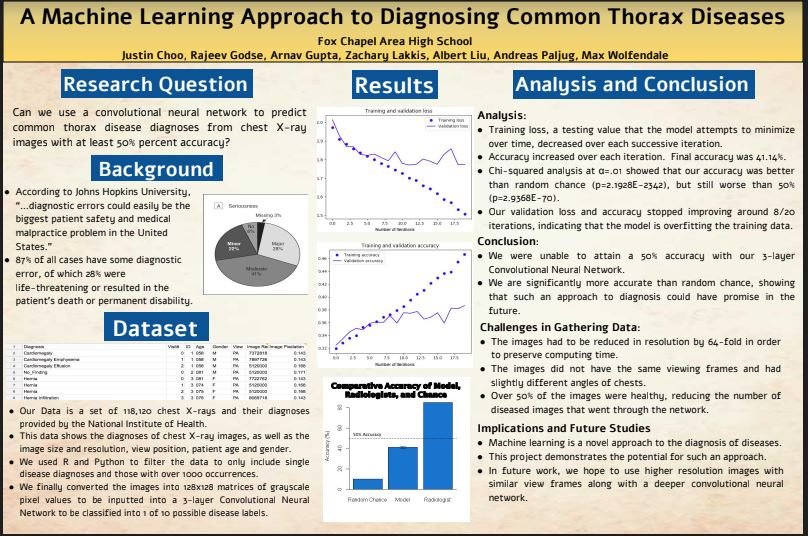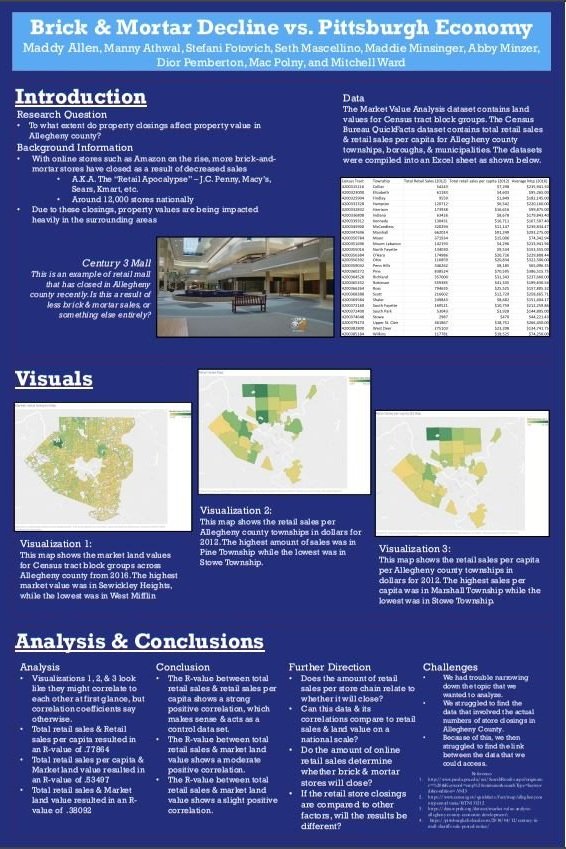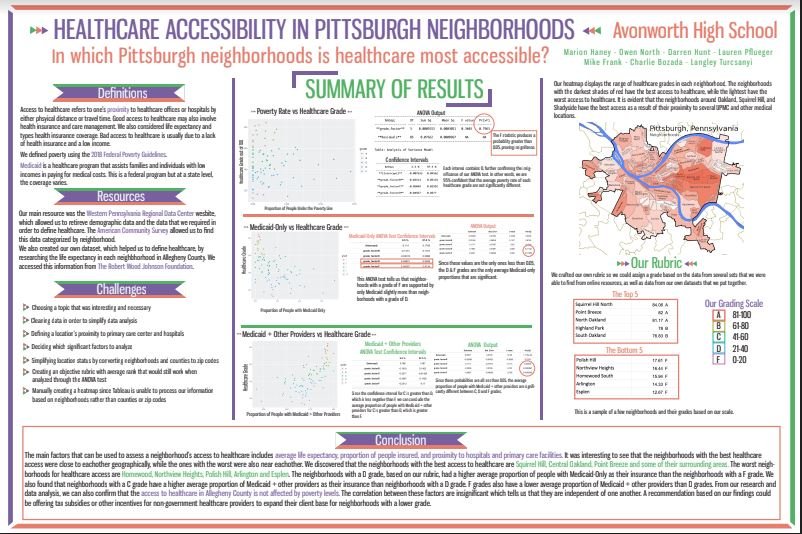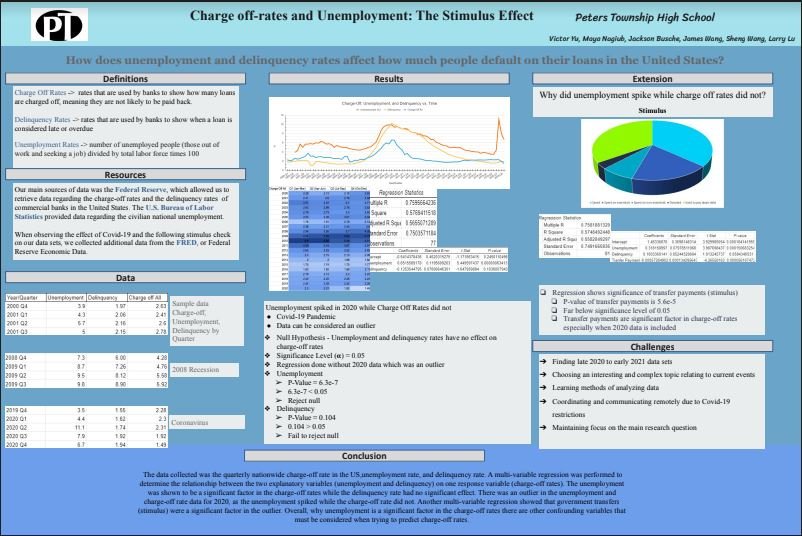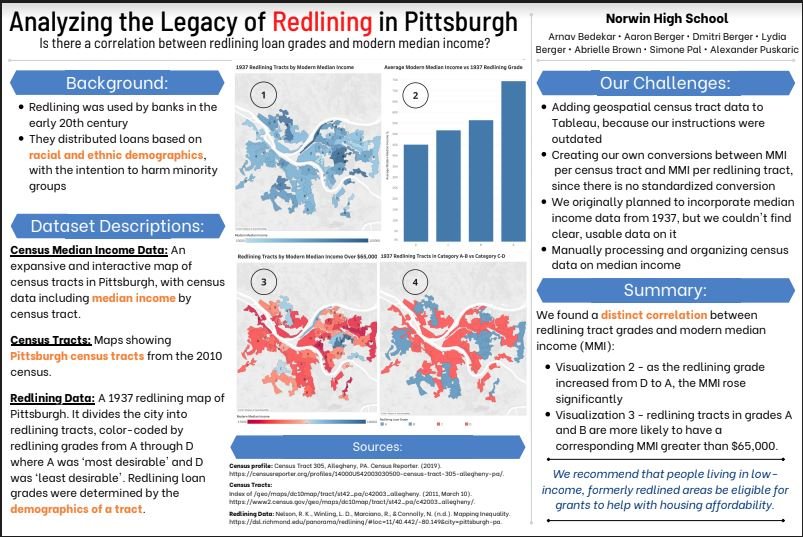
The DataJam
The videos provided below will introduce you to the DataJam, guide you through the process of forming a team, assist your team in selecting a research question and finding a dataset for analysis, outline the timeline for completing a DataJam project, and demonstrate how you can seek assistance from DataJam mentors for all aspects of your project.
Currently we have 7 videos to provide you with an introduction to the DataJam:
Introduction to the DataJam – This is a brief 3-minute video that is a first introduction to what the DataJam is and what it involves
DataJam Mentor Overview to the Pittsburgh DataJam – This is a longer 15-minute video that explains in more detail what “big data” is and all of the logistics of doing a DataJam project as explained by three DataJam mentors who are available to help all DataJam teams
A Walk Through The DataJam Website – A 7-minute guided tour through the highlights of The DataJam website and all the resources available to DataJam teams!
Data Diaries #1 (Small Steps to Tackle Big Data) – A 6-minute video that covers how to choose a DataJam topic, find a data set and get started with your project
Data Diaries #2 (Why Correlation is NOT Causation) – A 6:24-minute video that covers the concept that finding a correlation between two variables does NOT mean that one variable causes the other
Data Diaries #3 (Analyzing Data!) – A 9-minute video that gives hints about how to analyze a dataset to answer a research question
Data Diaries #4 (Powerful Presentations) – A 8:45-minute video that gives helpful pointers on how to tell a story with your data, in other words “How to you tell an engaging scientific story”








DataJam Guide Book
The High School and Community College DataJam Guide Books include guidelines for writing a DataJam Project Proposal, a Proposal Template, and a Permission Slip for teams interested in joining the online Slack workspace – an excellent platform for teams to collaborate on their DataJam projects and receive online assistance from DataJam mentors. Additionally, it provides guidelines for creating a DataJam Poster and Presentation and the Rubric used to evaluate DataJam projects.
Proposals, permission slips and posters are all submitted by emailing them to datajam@thedatajam.org.
DataJam Questions Inspiration Guide
The DataJam has released new data set guides for those who want to start their projects! These guides contain expertly curated data sets from various fields like Biomedical and Economics, and location-based data from regional and national data bases. This guide provides sample research questions and handpicked datasets from experts in a wide variety of fields!
High School DataJam Timeline for 2026
“Step 1: Sign-up
Each team needs to fill out the online sign-up form on The DataJam website and student permission slips on page 8 & 9 to be sent to datajam@thedatajam.org. The sign-up form will ask (1) advisor name and email, (2) team name, (3) student names and emails (4) availability to meet with a mentor. If you are signing up more than one team with the same advisor, please fill out one form for each team. DO NOT fill out all teams on one form. *Note that it is best to provide a non-school email address on the permission slip as many schools block outside emails, such as those from The DataJam and Slack.
”
Late August 2025 - January 2026
“Step 2: Submit your proposal
There is a rolling deadline for teams to turn in DataJam proposals. Use the proposal template on page 7 of this guidebook and submit it to the High School online proposal form on The DataJam’s website. Your team will receive feedback from The DataJam and further guidance on your proposed project within a week after your proposal is turned in.
”
December 5, 2025 – January 30, 2026
“Step 3: Projects Underway
Teams work on DataJam projects. DataJam mentors are available to meet with your team by zoom or a videoconferencing service that works best for your team. The times submitted in the sign-up form will be used to match you with a mentor. Once you have a team mentor you can communicate with them regularly on the DataJam 2026 Slack workspace.
”
January 2026 – Late March 2026
“Step 4: Submit your Poster
DataJam posters are due. Follow the instructions on page 10 of this guidebook. Posters should be 24” x 36” in size and saved as a pdf file. They should be submitted to the High School posters form on The DataJam website.
”
Friday, March 27, 2026
“Step 5: Submit your Presentations and Attend a Judging Session
Final slide presentations will be scheduled for each team at a time that works for both the team and the 3- judge panel, who will be listening to each team. The DataJam will send a form to schedule your final presentation time. The final presentations will be held on Zoom. Teams are to submit their presentation slides to the presentation form on The DataJam’s website at least 24 hours before their presentation is scheduled.
”
April 6 - April 21, 2026
“Step 6: Finale
High School DataJam 2026 Finale! The finale will be held on Thursday, April 23, 2026 from 5:30-7:00 PM EST (3:30-5:00 PST), on Zoom: https://pitt.zoom.us/j/94389494426. DataJam teams, parents, teachers, mentors, and all who are interested are invited to attend. DataJam team projects will be presented, and a variety of awards will be
”
Thursday, April 23, 2026
Community College DataJam Timeline for 2025 & 2026
“redStep 1: Sign-up
Each team needs to fill out the online sign-up form on The DataJam website and student permission slips on page 7 & 8 to be sent to datajam@thedatajam.org. The sign-up form will ask (1) advisor name and email, (2) team name, (3) student names and emails (4) availability to meet with a mentor. If you are signing up more than one team with the same advisor, please fill out one form for each team. DO NOT fill out all teams on one form. Sign up for the College DataJam Slack workspace: an online workspace for all DataJam teams where they can easily communicate with each other and with DataJam mentors.
”
Fall – August/September 2025
Spring – January 2026
“Step 2: Submit your proposal
The deadline for teams to turn in DataJam proposals. Use the proposal template on page 6 of this guidebook and submit it to the Community College online proposal form on The DataJam’s website. Your team will receive feedback from The DataJam and further guidance on your proposed project within a week after your proposal is turned in.
”
Fall – Friday, Oct. 3, 2025
Spring – Friday, Feb. 6, 2026
“Step 3: Projects Underway
Teams work on DataJam projects. DataJam mentors are available to meet with your team by Zoom or a videoconferencing service that works best for your team. The times submitted in the sign-up form will be used to match you with a mentor. Once you have a team mentor you can communicate with them regularly on The DataJam 2026 Slack workspace.
”
Fall – Sept. thru mid-Nov.
Spring – Feb. thru early Apr.
“Step 4: Submit your Poster
DataJam posters are due. Follow the instructions on page 10 of this guidebook. Posters should be 24” x 36” in size and saved as a pdf file. They should be submitted to the Community College posters form on The DataJam website.
”
Fall – Friday, Nov. 28, 2025
Spring – Friday, Apr. 3, 2026
“Step 5: Submit your Presentations and Attend a Judging Session
Final slide presentations will be scheduled for each team at a time that works for both the team and the 3- judge panel, who will be listening to each team. The DataJam will send a form to schedule your final presentation time. The final presentations will be held on Zoom. Teams are to submit their presentation slides to the presentation form on The DataJam’s website at least 24 hours before their presentation is scheduled.
”
Fall – 12/8/25 – 12/10/25
Spring – 4/27/26 – 4/29/26
“Step 6: Finale
Community College DataJam Finale will be held from 5:30-7:00 PM ET (2:30-4:00 PM PT) on Zoom. DataJam teams, instructors, mentors, and all who are interested are invited to attend. DataJam team projects will be presented, and a variety of awards will be given! Zoom link: https://pitt.zoom.us/j/94389494426.
”
Fall – Thursday, Dec. 11, 2024
Spring – Thursday, Apr 30, 2025
Past Projects

A hallmark of the DataJam is that each team chooses the topic they want to study. But deciding on a topic for a DataJam Project usually takes some work and it is very good to have some options to choose from. The DataJam suggests that a team start the process by having each team member come up with an idea of a question they would like to address in their DataJam project. Write all the ideas down and have a group discussion and as a group decide on your top three choices.
Then start with your first choice and think about what data you will need to answer your question and start searching to see if you can find a publicly available dataset that contains the data you need. If you need several types of data to answer your question, make sure you can find each, and that the datasets are organized similarly or you can convert all your datasets into a single organizational format. For example, you might find one dataset that is organized by census tract and another that is organized by zip code. It is hard to merge data across these organizational categories because they are usually not congruent --- census tracts may cut across zip codes. If you do not succeed in finding data that will help you answer your first choice question, move on to your second choice question.
The DataJam also suggests that teams think about focusing their project on a question that is of interest to your local community. It is often easier to find local datasets to draw data from. Moreover, both students, teachers, and others get more excited about a project if it is addressing an issue that is of local interest to your community.
Completed High School DataJam Projects
2016
2017
2018
2019
2020
2021
2022
2023
2024
2025
Completed College DataJam Projects
2024 Spring
2024 Fall
2025 Spring

Poster Examples
Click a poster to get a closer look!
In this section we have some examples of past posters. Follow the instructions in the Guide Book when preparing your poster.
• Your poster should be 24” x 36”, either horizontally or vertically arranged.
• The title of your project, your school and the students participating on the team should be at the top of the poster.
• Make is easy to find:
- What is your research question?
- What dataset(s) did you use?
- A graphical visualization of the data you analyzed.
- What challenges did you face doing your project?
- What were your main results?
- Can you make recommendations based on your results?







